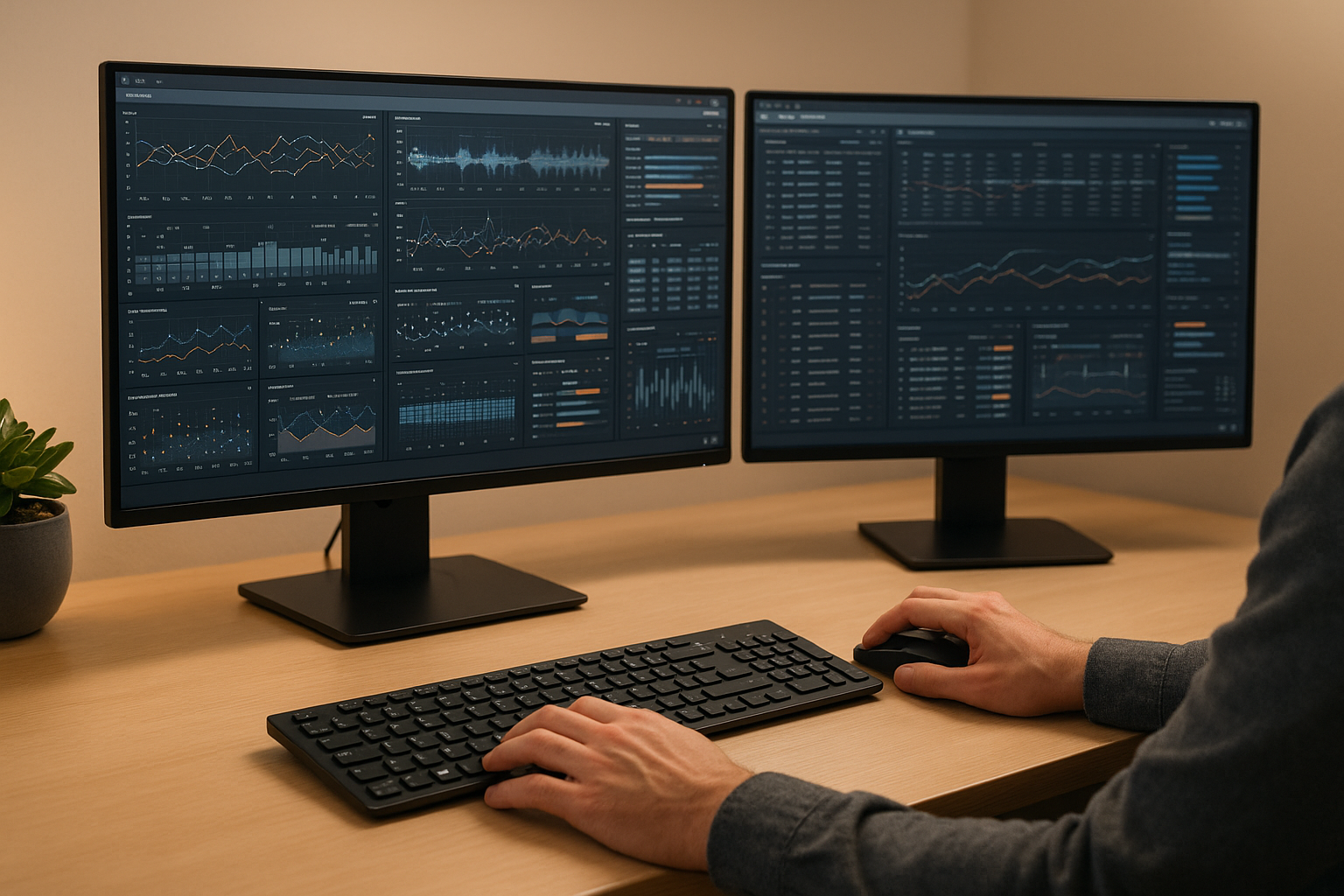Designing complex interfaces for experts
Designing Complex Interfaces for Experts
Creating complex user interfaces (UI) is a demanding task, especially when targeting expert users or "power users." These users, often highly skilled and accustomed to using professional tools daily, have specific expectations regarding efficiency, information density, and performance. This article explores key principles for designing successful complex interfaces by highlighting concrete strategies and relevant examples.
Introduction: Why Complex Interfaces Are a Unique Challenge
In the digital design field, simplicity and visual clarity are often valued. However, these principles are not always suitable for expert users who need quick access to large volumes of data and features. Through an initial anecdote, we discover that even well-intentioned interfaces can fail miserably if they do not consider the real needs of users. This realization sets the tone: designing for experts requires a tailored approach.
Basics of Designing for "Power Users"
Understanding Users: Who Are Power Users?
"Power users" are experienced users who interact with complex tools daily. Unlike novices, their main goal is productivity. They prefer dense interfaces that allow them to work efficiently without interruption. These users focus on efficiency, execution speed, and instant access to necessary information.
What They Look For:
- Fewer clicks to complete a task.
- Compact and well-structured information.
- Advanced features tailored to their expertise.
- A reliable interface, without unnecessary distractions.
The Problem with Traditional Approaches
Interfaces designed for novice users (e.g., consumer applications like WhatsApp or Airbnb) focus on simplicity and clarity. However, applying these same principles to complex tools often leads to failures. Why? Because what is perceived as simplifying for novices can frustrate experts by depriving them of the data and features they need.
Furthermore, development teams that create these interfaces without involving UX designers or writers fall into the trap of "raw complexity." The result: overloaded, confusing, and unintuitive interfaces.
Principles for Designing a Successful Complex Interface
1. Maximizing Usable Space
Space is a precious resource in complex interfaces. Here are some methods to optimize its use:
- Reduce "chrome": Minimize navigation bars or peripheral menus to enlarge the main area.
- Emphasize interactive areas: Ensure users can easily view essential data without excessive scrolling.
- Limit unnecessary spaces: Experts dislike visual space wastage.
Example: An interface with data grids should display as many columns as possible while remaining readable.
2. Making Data Scannable
The ability to quickly scan an interface is crucial for expert users. To achieve this:
- Structure elements with clear titles and visual separations.
- Limit unnecessary icons: use them only if universally understood (e.g., a calendar icon for dates).
- Constantly test the readability of data grids.
Tip: Typographic choices have a major impact. Opt for screen-friendly fonts like Roboto or Roboto Condensed.
3. Mastering Color Usage
Colors should convey precise information, never just for decoration.
- Use functional colors: for example, green for a primary action, red for a critical state.
- Avoid overly saturated or distracting colors: subtle shades are sufficient to guide the user.
- Follow contrast rules: Ensure information remains readable, especially for low vision or color-blind users.
Example: A complex grid can use color codes to indicate critical states while maintaining a clean presentation.
4. Hiding Unnecessary Complexity
Show only the necessary information at each usage stage:
- Hide advanced options until needed.
- Break down complex processes into clear steps.
- Integrate contextual or dropdown menus to minimize overload.
Example: In a ticketing interface, details of a specific ticket may appear only when selected.
5. Writing Precisely
Words matter. In a complex interface, every word must be clear and relevant:
- Avoid unnecessary jargon unless your users already master it.
- Test error messages and modals with real users.
- Be explicit without oversimplifying. For instance, use abbreviations only if familiar to users.
Testing and Iterating: The Key to Sustainable Success
An essential rule for designing for experts is to spend time with them. Observe how they work, ask questions, identify their frustrations, and document their processes.
Testing Tips:
- Test early and often: a paper prototype can already reveal major errors.
- Use real data in tests to ensure an authentic experience.
- Listen to feedback: Expert users are excellent at pointing out what doesn't work.
Common Mistakes to Avoid
Here are some typical errors in complex interfaces:
- Extreme color contrast alternation between rows in a table, causing eye strain.
- Illegible or too small font, making navigation frustrating.
- Interfaces too "subtle" in design, sacrificing clarity for aesthetics.
Key Takeaways
- Understanding users: Interfaces for experts must meet their specific needs for efficiency and information density.
- Space optimization: Reduce decorative elements and maximize interactive area.
- Readability above all: Structure grids and choose fonts suitable for digital reading.
- Functional colors, not decorative: Use colors to guide, not distract.
- Hide complexity: Show only what is necessary at a given moment.
- Test with real users: Their feedback is essential for a functional interface.
- Avoid UX/UI design stereotypes: What works for novices may fail for experts.
Conclusion
Designing complex interfaces for experts is both a challenge and an extraordinary opportunity. By staying user-centered, adhering to proven design principles, and regularly testing your ideas, you can create tools that not only meet user expectations but exceed them. Complex interfaces should not be intimidating – they should be effective allies in the daily work of "power users."
Source: "Indispensable Principles for Designing Complex User Interfaces by Dean Schuster" - Wey Wey Web, YouTube, Dec 16, 2024 - https://www.youtube.com/watch?v=mvrU7EPfqmk
Use: Embedded for reference. Brief quotes used for commentary/review.
